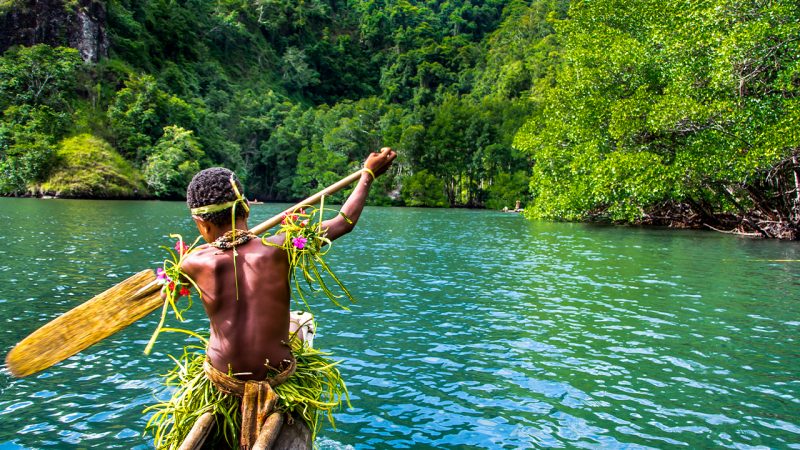When it comes to global mining darlings, countries like China, Australia, and South Africa have dominated the world stage.
However, just north of Queensland resides a small country piquing worldwide interest. Papua New Guinea is being eyed by some of the biggest players in the mining game as a new hotspot for resource opportunities.
A steady rebuild
In reality, mining in Papua New Guinea has been going on since the early 19th Century. It was a slow build-up for the small country, but the 1960s brought with them a porphyry copper boom in the country.
The Panguna mine produced 30 million tonnes of copper over 16 years.
With the 1980s came the early signs of a gold boom as significant discoveries garnered the attention of junior explorers and big-caps alike. However, the stock market crash of 1987 brought things to an abrupt halt in the country.
Since then, strict regulation, political uncertainty, and tough geological conditions have kept investor sentiment in Papua New Guinea’s mining sector low.
It’s only with improved exploration tech and a shift in the Papua New Guinea government’s attitude towards the industry that recent times have seen eager explorers begin once more to sift through the sands of the small country.
It was the election of Hon. James Marape as the country’s new Prime Minister in mid-2019, however, that really turned heads back towards Papua New Guinea.
Mr Marape made a hefty promise upon his election to make the country the “richest black Christian nation” in the world. Currently, Papua New Guinea is among the poorest.
The catalyst for this enormous economic turnaround, of course, is the resources industry. Mr Marape called current resource laws “outdated” and said he plans to adjust regulations to maximise gain.
What’s beneath the surface?
While copper and gold have historically been the country’s primary mining targets, Papua New Guinea is starting to tout a world of resources under its soil.
Bauxite, which is used to make aluminium, has recently been added to the list of important exports for the country.
On top of this, Mr Marape showed a special affinity for the liquefied natural gas (LNG) opportunities in the country. Papua New Guinea’s Mineral Resources Authority claims explorers can find rare earth elements, nickel, cobalt, iron and more lurking beneath the floor.
A 2019 report from the World Bank Group predicted that resource projects will account for a five per cent Gross Domestic Product (GDP) growth in the country over the year.
While this growth will be underpinned by a number of new prospectors shipping equipment to Papua New Guinea’s shore, some companies spotted the opportunity early and have already set up camp in the country.
Who’s making bank?
One of South Africa’s top-three gold miners, Harmony Gold Mining Company, owns the prestigious Hidden Valley gold and silver mine in Papua New Guinea’s Morobe province.
Hidden Valley has estimated gold reserves of 6.4 million ounces. Over 2019, Harmony produced 6.2 tonnes of gold from the area at an all-in sustaining cost of US$1090 per ounce (A$1584 per ounce).
Melbourne-based mining giant Newcrest sold off its 50 per cent stake in Hidden Valley in 2016, but it kept its presence in Papua New Guinea strong.
Newcrest’s Lihir gold mine is one of the largest in the country with an ore reserve of 24 million ounces and mineral resource of 50 million ounces. Over the 2019 financial year, Lihir produced roughly 26.5 tonnes of gold.
Canada-based Barrick Gold and Chinese explorer Zijin have even teamed up over the Porgera mine.
Ready to join the big players and cash in from Papua New Guinea’s resources is ASX-listed junior explorer Mayur Resources (ASX:MRL).
Mayur’s motivation for its Papua New Guinea plans is somewhat more altruistic than simply making a quick buck, however. The company couples its resources projects with community engagement programs to help with the development of economic growth and “Nation Building” of Papua New Guinea.
The company’s key projects are designed to strengthen the economy of the country and bring about future prosperity. In fact, Mayur’s Managing Director, Paul Mulder, met with the new Prime Minister soon after his election regarding future plans for the country and the company.
Mayur’s main projects include its Central Cement and Limestone (CCL) Project, the Lae Enviro Energy Park, and the Orkolo Bay Mineral Sands Project.
A country ready to boom
With an ambitious new leader and some backing from the biggest names in the mining game in the form of ongoing projects, Papua New Guinea is poised to bulldoze its place into the resources world.
The resource opportunities in the country have been overshadowed by its historical social and political struggles, but a new era is on the horizon for Papua New Guinea.
With the bubble of resources ready to burst, only one question remains: who will get in early enough to catch the overflow, and who will watch the gold opportunity slip by?

